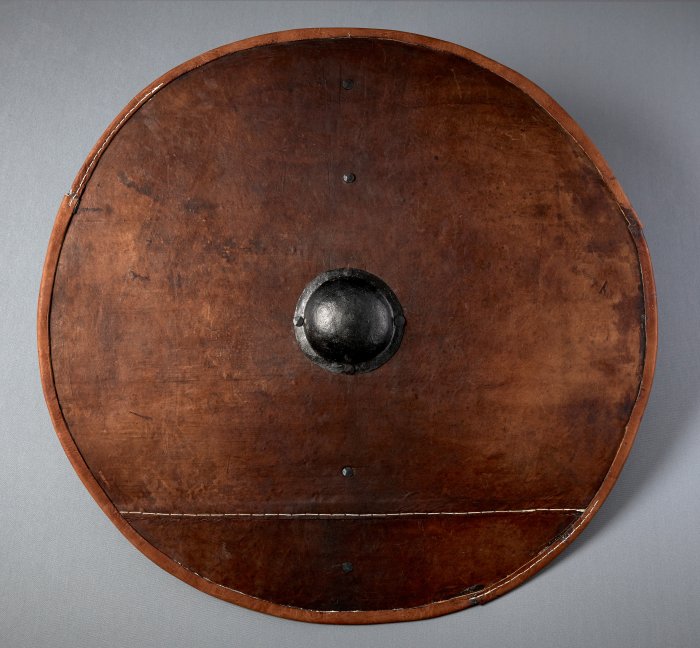Secrets Of Viking Age Shields Finally Revealed
Conny Waters – MessageToEagle.com – In a careful interdisciplinary study of rare shields finds, researchers are finally able to reveal the last piece of the puzzle of how Vikings and their ancestors in the Iron Age made their shields.

Viking reenactors using shields in combat. Although there are many reenactment shields in existence, it has not been possible to make an accurate Viking shield replica before now. Photographer: Jacob Nyborg Andreassen/Society for Combat Archaeology.
Shields are known to have consisted of wooden boards which were covered with animal skin. The skin was the most important part of the construction and gave the shield its strength and structural integrity. However, skin products of the Iron Age and Viking Age were the equivalent of today’s plastics and could vary greatly in strength and character, depending upon what animal species was used and how the skin had been treated. This aspect of shields has never been successfully analyzed and thought impossible to determine until now.

A well-preserved fragment from the edge of a Viking Age shield which was excavated from a grave in Birka (Sweden). The fragment consists of a wooden core and is reinforced with tanned sheep leather of sheep from on both sides as well as an additional thick leather rim of cattle hide. Photographer: Rolf Warming/Society for Combat Archaeology.
“We no longer have to guess how shields were made in the Iron Age and Viking Age. The question of what type of skin products were used has finally been solved in this new study, giving us a more-or-less complete understanding of what such shields looked like.”, says archaeologist and project manager Rolf Warming (Society for Combat Archaeology).
The research team, consisting of both archaeologists and conservators, developed a new methodology for the task and conducted various microanalyses on skin samples from four separate shield finds, dating from between c. 350 BC and 1000 AD. The study was able to successfully determine whether the hide samples were untanned or tanned leather and what animal species they came from. The results show that hides were carefully chosen and treated in a variety of ways before they were put on the shield and used in combat. Combative techniques and battle tactics were greatly influenced by how the shields would have performed, so great attention was given to all aspects of the craftsmanship involved in their construction. How the original shield finds would have functioned in combat is now possible to research in the future thanks to the new study. One such shield has already been made and tested in collaboration with Trelleborg Viking Fortress/National Museum of Denmark based on the new research.

The first authentic Viking shield replica, made in collaboration with Trelleborg Viking Fortress (National Museum of Denmark). Photographer: Tom Jersø/The Viking Shield Project.
“The results make it possible construct completely authentic replicas of Iron Age and Viking Age shields for the very first time, opening up for new opportunities of researching warfare during this period through archaeological experimentation”, says Rolf Warming.
See also: More About Vikings
The study is the first systematic investigation of the nature and use of hide in Iron Age and Viking Age shields. The methodology and results presented in this new study not only makes a significant contribution to our current body of knowledge but provides an important basis for future investigations into weaponry technologies and warfare of the Iron Age Viking Age. The research paper, “Shields and Hide”, is to be published in the journal Bericht der Römisch-Germanischen Kommission on Friday, October 9th.
Written by Conny Waters – AncientPages.com Staff Writer
Expand for referencesAbout the project:
The full title of the research paper is “Shields and Hide: On the use of hide in Germanic shields of the Iron Age and Viking Age”. The study is an interdisciplinary project and collaborative effort between the Society for Combat Archaeology, the School of Conservation (Copenhagen) and Aarhus University.
Authors:
Rolf Fabricius Warming (Cand.mag., MA)
René Larsen (PhD, associate professor emeritus)
Dorte V. P. Sommer (Cand.scient.cons.)
Xenia Pauli Jensen (PhD)
Luise Ørsted Brandt (PhD)










